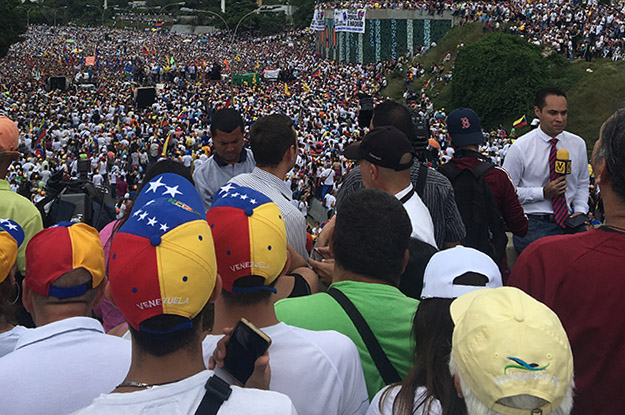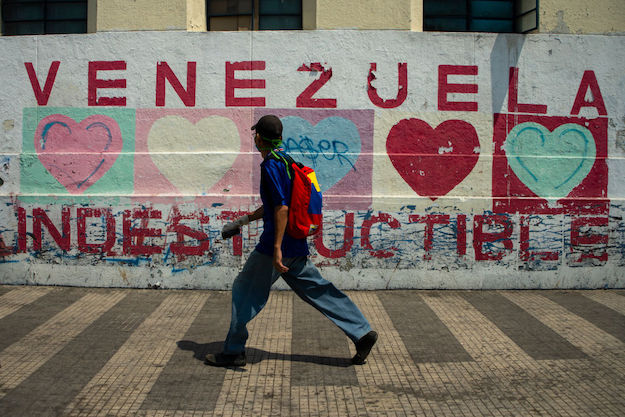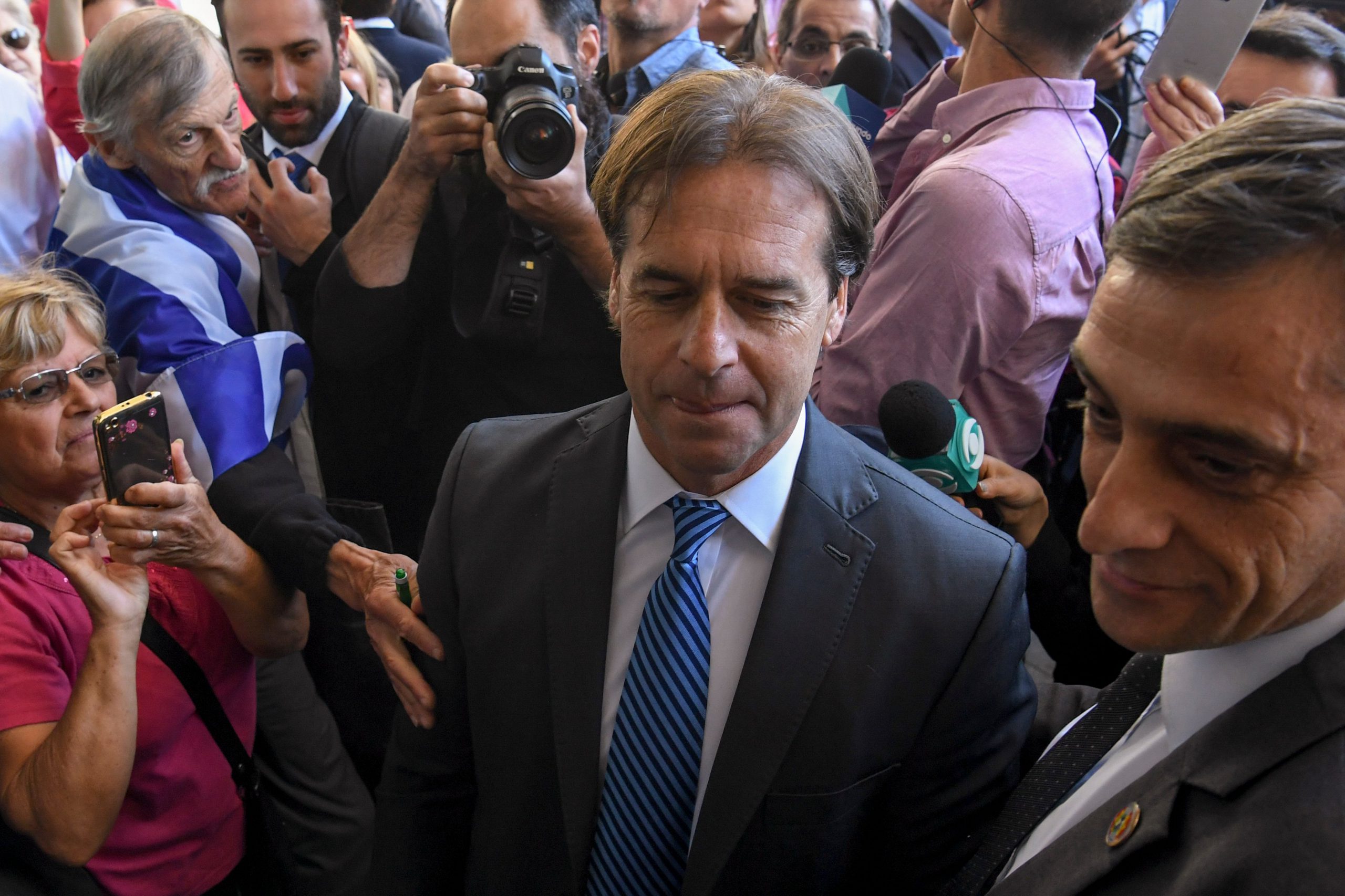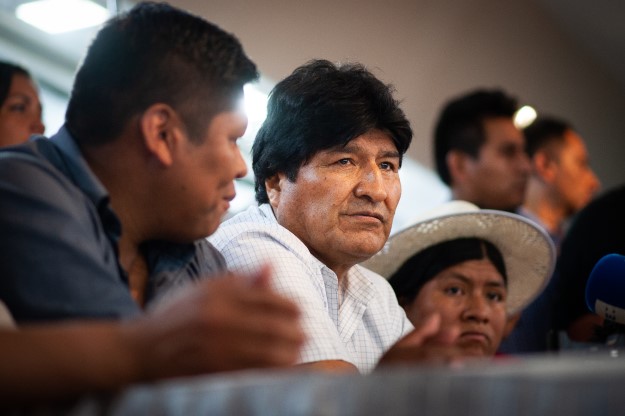At each new turn, Venezuela’s political crisis appears headed for climax. But amid political maneuvering and demonstrations by both the government of President Nicolás Maduro and his opposition, the mood on the ground in Caracas remains one of uncertainty – and determination.
Betsimar, a 55-year-old woman from Caracas, was one of the thousands of people who marched on the streets of the capital Wednesday in an opposition protest dubbed the “Taking of Venezuela.”
“We went out to the streets, and that’s where we’re going to stay,” she said.
In the last week, events in Venezuela have made a clash seem imminent. On October 20, the National Electoral Council suspended the opposition’s quest for a recall referendum against Maduro by refusing to allow them to gather the signatures required to move the process forward. Two days later, a mob of government supporters attacked the National Assembly, where opposition deputies were debating the possibility of impeachment. (Few Venezuelans have missed the footage of the chaos.)
Curiously, all this occurred even as the two sides, with mediation from the Vatican and the Union of South American Nations, sought a dialogue. Opposition leader Jesús Chúo Torrealba said he and his counterparts would make their stand at the negotiating table. But later that day, amid a general sense of confusion, Torrealba and other opposition leaders called on supporters to take to the streets on October 26.
The mere possibility of dialogue had already infuriated many of those opposition supporters – and some in the leadership – who see little point in talking to a man they view as a dictator. The perception that the opposition has achieved little despite the severity of the crisis and the breadth of their support only feeds uncertainty. Many observers believed the crowds would be unmotivated to march on Wednesday.
They were wrong. Thousands demonstrated on the streets and highways of Caracas and cities throughout the country. The protests were peaceful in the capital, but isolated violence cropped up in at least five other cities. Photos of clashes between protesters, national guard units and radical chavista militias circulated on social media. A police officer on the outskirts of Caracas died of a gunshot wound to the stomach as he tried to repel the crowd.
So what happens now? The opposition has the support of the majority and has shown that it can mobilize. The government still has control of the country’s institutions and, critically, the backing of the armed forces. It would seem something has to give.
While some protesters urged the march on Wednesday to move on to government buildings, opposition leaders, led by the governor of Miranda Henrique Capriles, called for restraint. On a stage erected on one of the main highways in Caracas, he and other opposition leaders laid out their immediate plans: a demonstration at the National Assembly on Thursday, a national strike on Friday. On Sunday they will tell a Vatican mediator that only a recall referendum before the end of the year will do. If the government refuses, they will march on the presidential palace, Miraflores, on November 3.
That proposal is, without doubt, a threat. Opposition protests are prohibited from taking place in and around government institutions. For many Venezuelans the possibility of a march on the palace immediately brings to mind the violent clashes of April 11, 2002 and February 12, 2014.
Government supporters, meanwhile, have been gathering at public institutions. For those of us who have witnessed the evolution of anti-chavismo sentiment, the pro-government marches that have taken place in the past months have been more revealing than the opposition’s. Gone are the interminable waves of red that former President Hugo Chávez seemed to so effortlessly to call into existence. The pro-government response has been scarcely attended.
The opposition has the support of the people, and they are using it strategically. Their goal is to keep people active and in the streets. The plan they laid out shows that they will give the government a chance to respond while at the same time showing that they can set the city at a standstill one day and fill it with thousands of supporters the next. The world is watching. Although a rational observer might think that the political crisis the government is now enduring must soon come to an end, for many Venezuelans uncertainty grows every day.
Bestimar isn’t worried about that now. She is convinced that returning to the street, peacefully and repeatedly, will force the government to the side of reason and to concede to allow the recall process to move forward this year, at least. For her, as for the leaders of the opposition, the street does not mean that there won’t be dialogue, but dialogue doesn’t mean they will leave the street.
—
Reyes is is a Venezuelan journalist and cofounder of independent news site Efecto Cocuyo.







